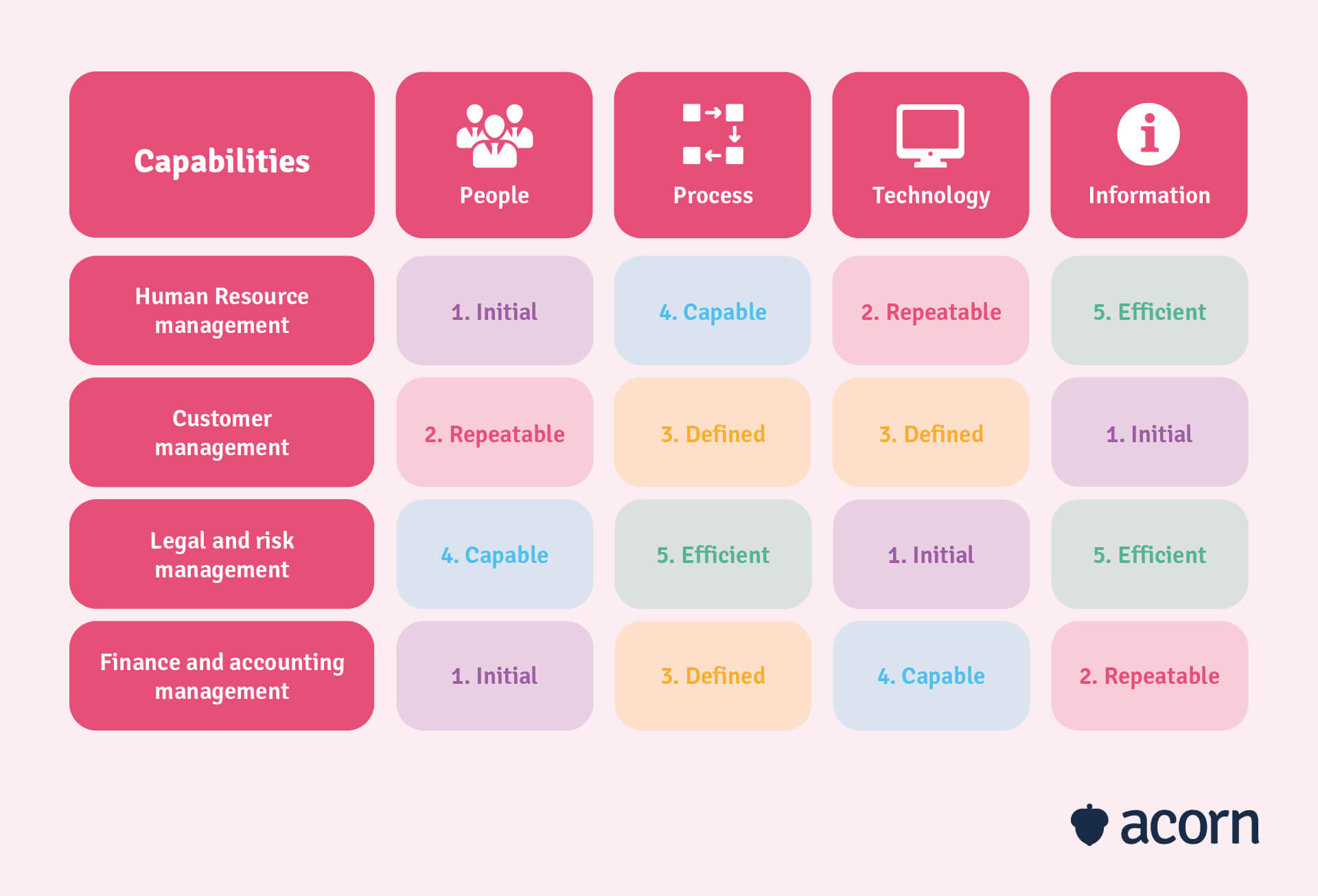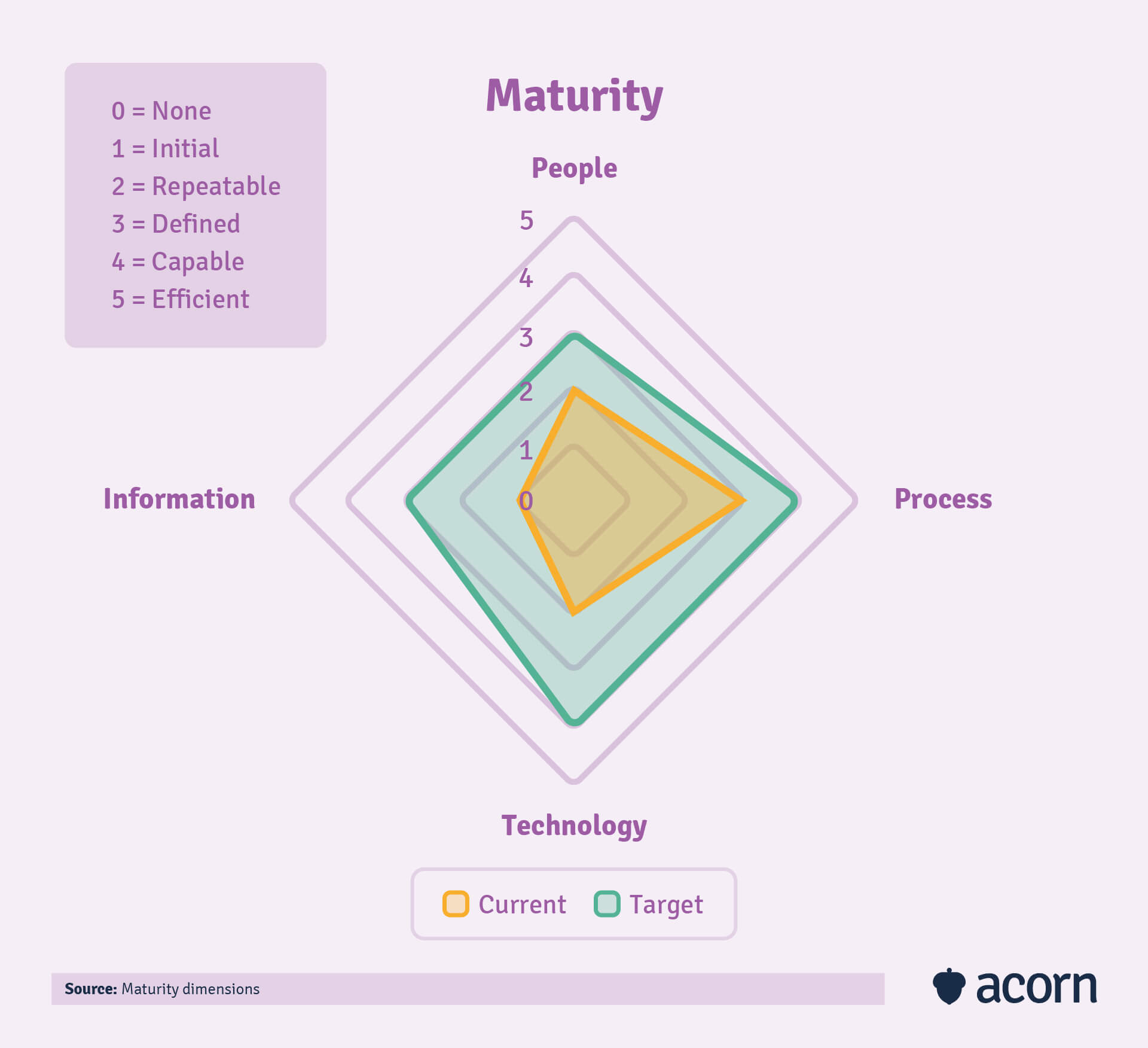The How-To Guide to Effective Capability Assessment
Reading Time:

Lead the pack with the latest in strategic L&D every month— straight to your inbox.
SubscribeBuilding your organisation and workforce is an important aspect of business planning, which is where a capability assessment comes in handy.
It’s a type of corporate reporting that urges your organisation towards achieving organisational strategy and increases your competitive advantage within your industry.
An effective business capability maturity model assessment gives your organisation further protection against industry changes and the potential financial penalties of ineffective workforce capabilities.
Let’s dive into the capability assessment guide and how it can help build success for your organisation.
What is a capability assessment?
A capability assessment is a structured and standardised framework for evaluating the capabilities, competencies of job seekers and your current employees. Capability assessments are carried out on a regular basis—rather than intermittently—to find the strengths and capability gaps of your workforce.
Do you need to use capability assessments?
When it comes to workforce planning (WFP), learning and development (L&D) and professional development, you need to understand what capabilities you intend to base these activities on. There are two types of important capabilities.
- Business capabilities: The abilities, tools, processes and knowledge an organisation possesses to be able to deliver on products or services.
- Employee capability: The skills, knowledge and behaviours of an employee allowing them to perform their job.
Both affect your organisation’s performance and its ability to meet your organisational goals.
Without a capability assessment, you’re going into any WFP, L&D or professional development activity blindly. You won’t know which skills gaps or capabilities to target to help build business resilience. Conducting one reveals your current workforce capability and highlights the gap between the current and required skills and expertise needed to meet your business priorities.
In other words, capability assessments are designed to help you with your performance management. Traditional learning management systems (LMS) only focus on developing skills over capabilities, meaning they don’t go the extra step of linking learning and capability development to performance. This is why we’ve created the first performance learning management system (PLMS) here at Acorn. A PLMS is designed to codify and operationalise capabilities for operational efficiency, linking your current capabilities to the expertise needed for true business success.
How to conduct a capability assessment
A capability assessment guide is the specific process that outlines the strategies and actions you need to build the skills, knowledge and behaviours your organisation needs as outlined in your capability framework. Generally, your employee capability assessment template will cover three main steps:
- Identifying capabilities
- Assessing capabilities
- Analysing the assessment.
We’ll break down what each of these steps involves below.
Identify capabilities
You can’t assess your current and needed workforce capability in any meaningful way without selecting the capabilities that are important. The first step is to define which capabilities you mean to assess.
Evaluate which business and employee capabilities will help you achieve your business strategy. This means analysing which business and employee capabilities will have the greatest (positive) impact both financially and for the customer. There are three questions you can ask to determine which capabilities are the most strategically important:
- Is it required to meet a strategic goal?
- Is it a key component in supporting a value proposition?
- Does it provide opportunities for future growth and value propositions?
Once you identify your capabilities, you need to set some assessment goals. What is the efficiency of your processes and resources that you want to measure with this assessment? There are many resources (including talent, knowledge, data, systems and financial resources) and structures and processes (the ways in a which an organisation produces output) that should be considered here, but the most important ones are:
- People
- Process
- Information
- Technology.
Execute the assessment
You need to be consistent, objective and unbiased in your scoring of assessment criteria. How you collect data is up to you. You can interview individuals, allow them to complete a self-assessment to determine their proficiency, or set up online assessments. A good way to visualise your findings is to record them in a table similar to a skills matrix, like the one below.

You’ll notice that the rating system isn’t just a variation of “good” and “bad” scores. What you’re really doing is a business capability maturity assessment, where you score each business or employee capability according to how “mature” they are.
The 5 levels of capability maturity
In the past we’ve talked about maturity models both for workforce planning and learning and development. In simple terms, capability maturity means how well-developed those capabilities are. When assessing capability, the five levels are:
- Initial
- Repeatable
- Defined
- Capable
- Efficient.

Analyse results and review
The main purpose of a capability assessment is to identify areas of improvement. The data will reveal what skills your workforce is capable in. But it will also highlight any opportunity for training where your workforce falls below your desired skill and capability targets.
For individual employees, this provides a goal for future professional development and career progression. For instance, if they were undertaking a leadership capability assessment, the data might reveal that they need more training in people management and strategies before they’re ready to progress in their career and head a team of their own. It also doubles as a guide for the participant’s job plan, underlining the steps they need to take for success.
For a business, a capability assessment might highlight issues such as which processes or structures are lacking, leading to potential financial penalties, loss of reputation, talent, effective procedures, or even the development of a toxic work culture. In short: It creates a framework for improvement.
Using the data gathered can help you focus your training and processes, but you can’t just perform a capability assessment once, implement changes, and then expect your business to continue its success indefinitely into the future. The industry is constantly changing with the addition and invention of new methodologies and technologies, and those in turn will create new issues for your organisation.
Continue to conduct capability assessments on a regular basis. Combined with an environmental scan, which provides insight into changes in industry standards, the data you report will give the opportunity to build up your organisational and workforce capabilities to keep ahead of the competition.
Using capability assessment tools
A capability assessment tool is a diagnostic tool designed to rate company or employee performance in industry-specific capabilities. There are capability assessment tools offered online or as part of cloud-based LMS software that can be customised for your business.
There’s one more important thing you need to remember about capabilities and your workforce: The capabilities your organisation needs are specific to your organisation alone. Whatever tool you use, you need to make sure it’s tailored to assess the specific capabilities necessary for your employees and business.
Key takeaways
Capability assessment is an important part of understanding your organisation and how well it performs the capabilities outlined in your capability framework.
An effective capability assessment means you can find the right candidate from a selection of job seekers. For current employees, it could mean guiding a participant’s job plan to ensure their career progression.
It’s not enough to set and forget capabilities for your business and employees. You also need to ensure that both your business and employees are meeting those capabilities to meet your strategic goals—and as further protection against changes in the industry.